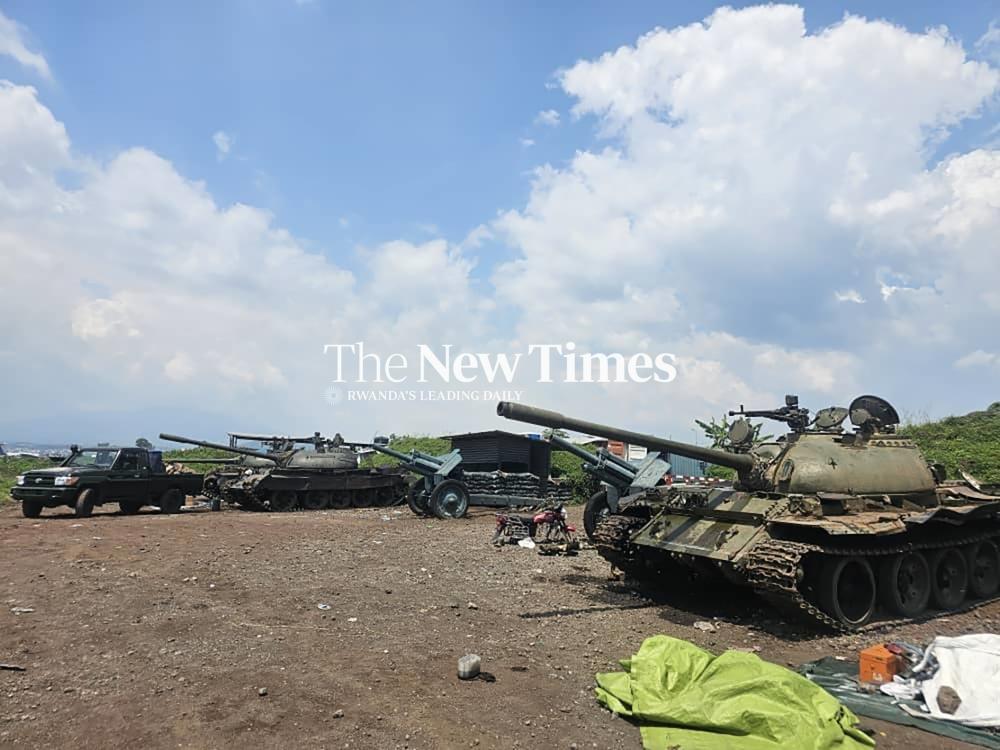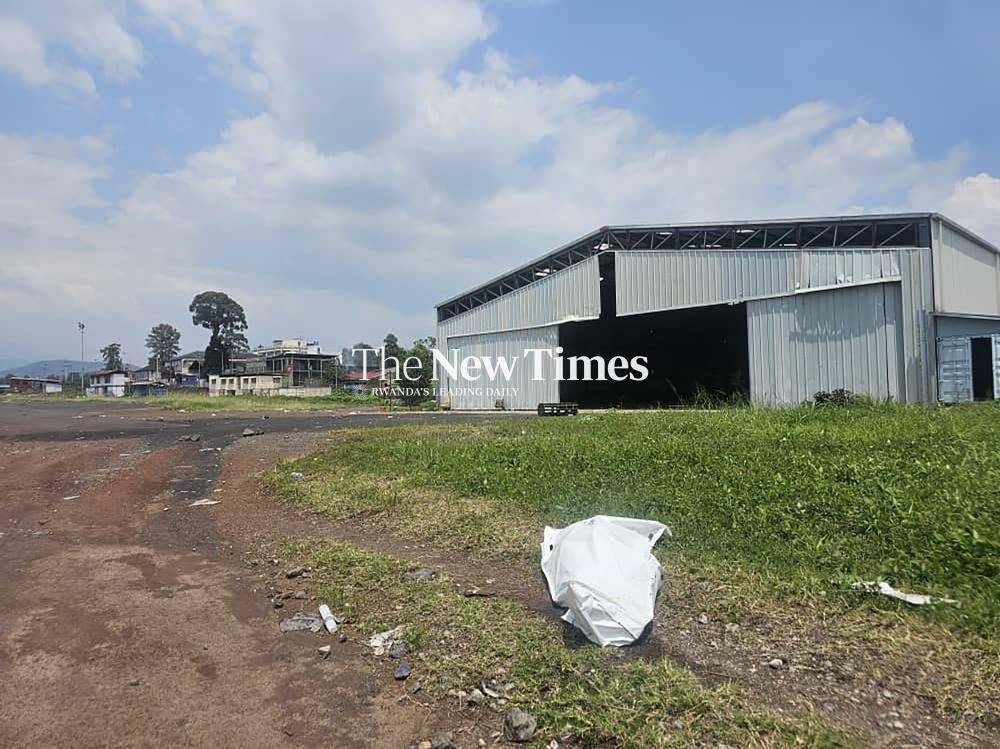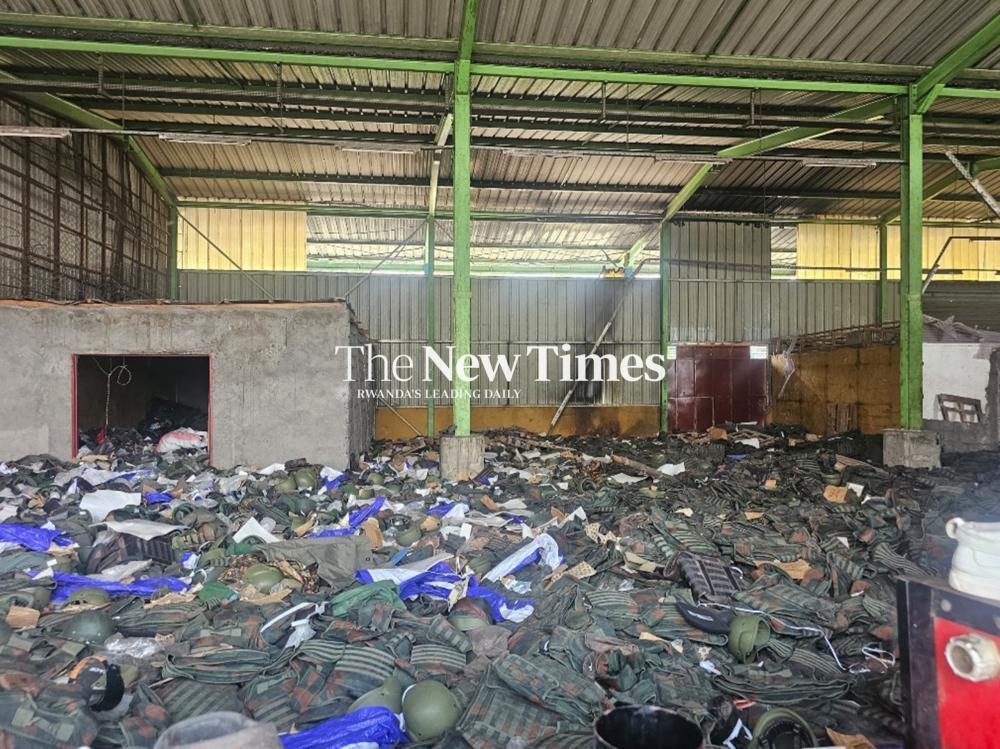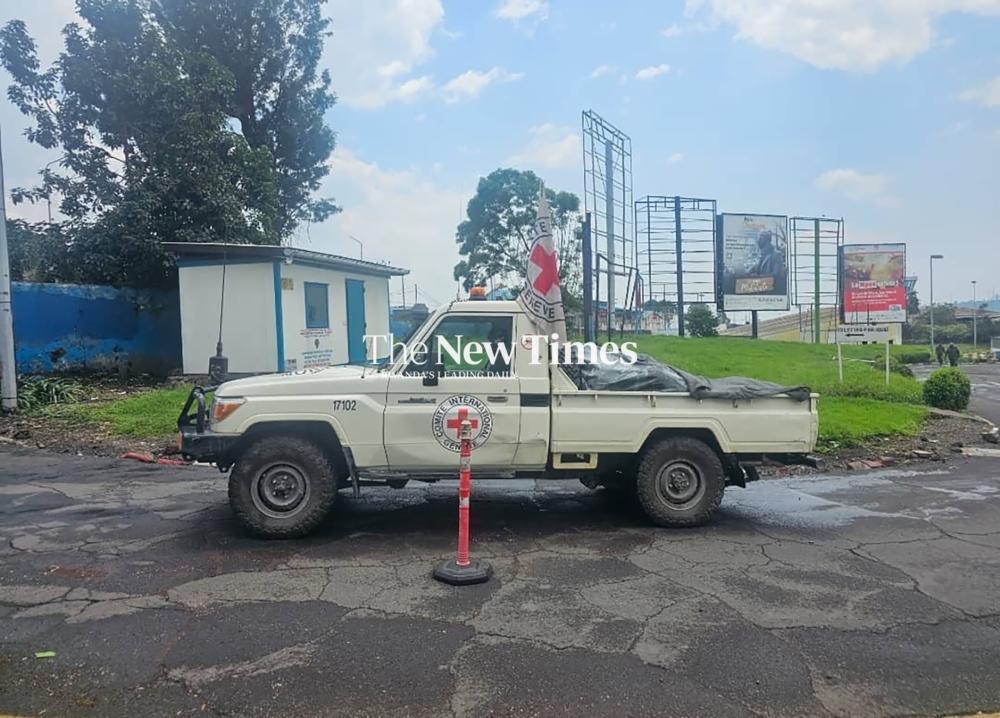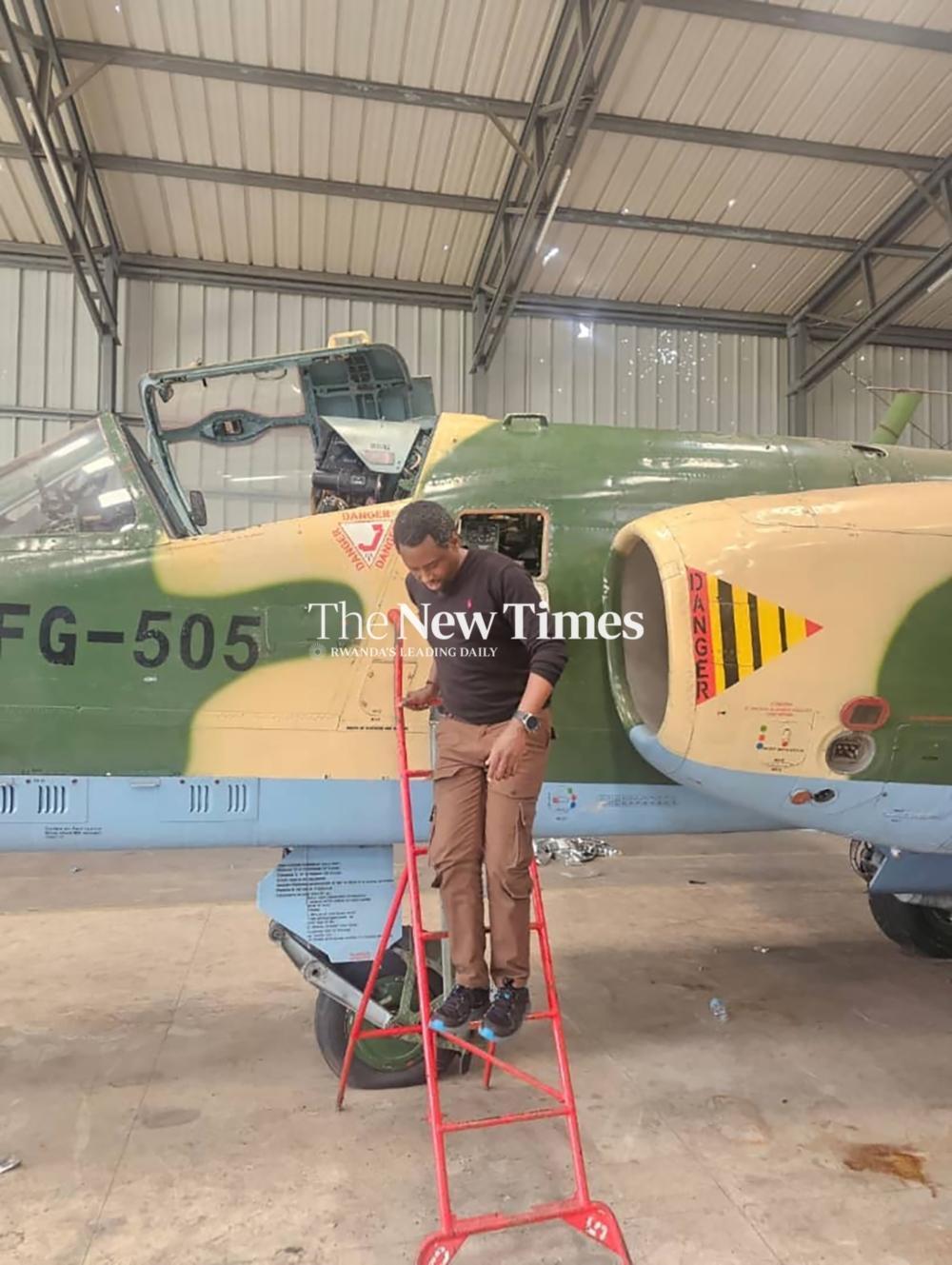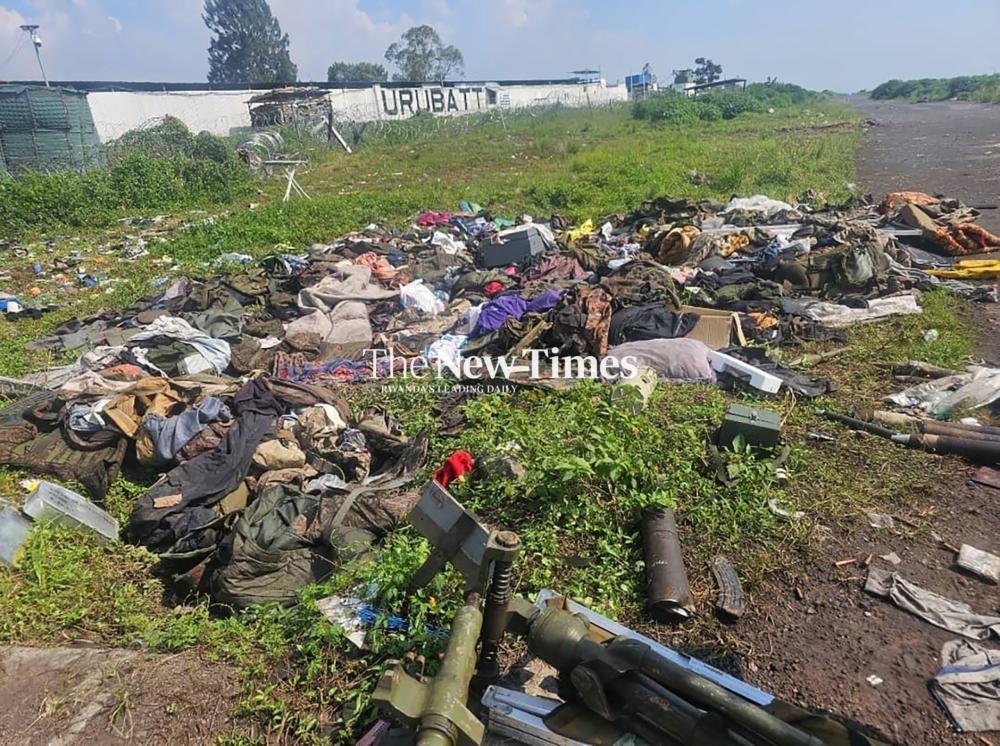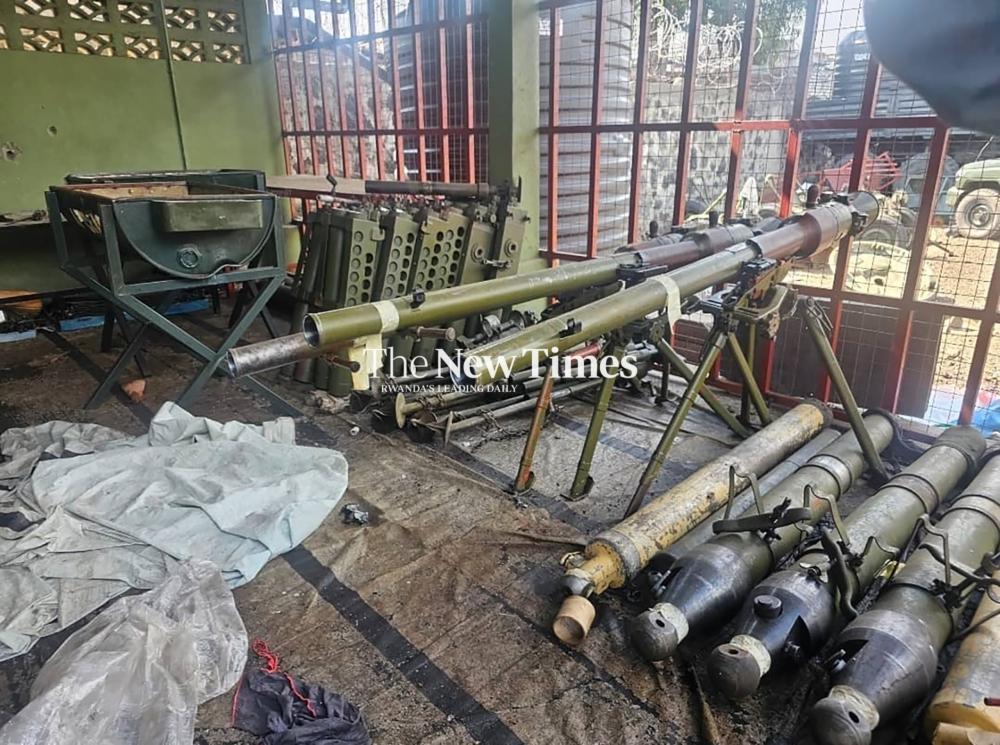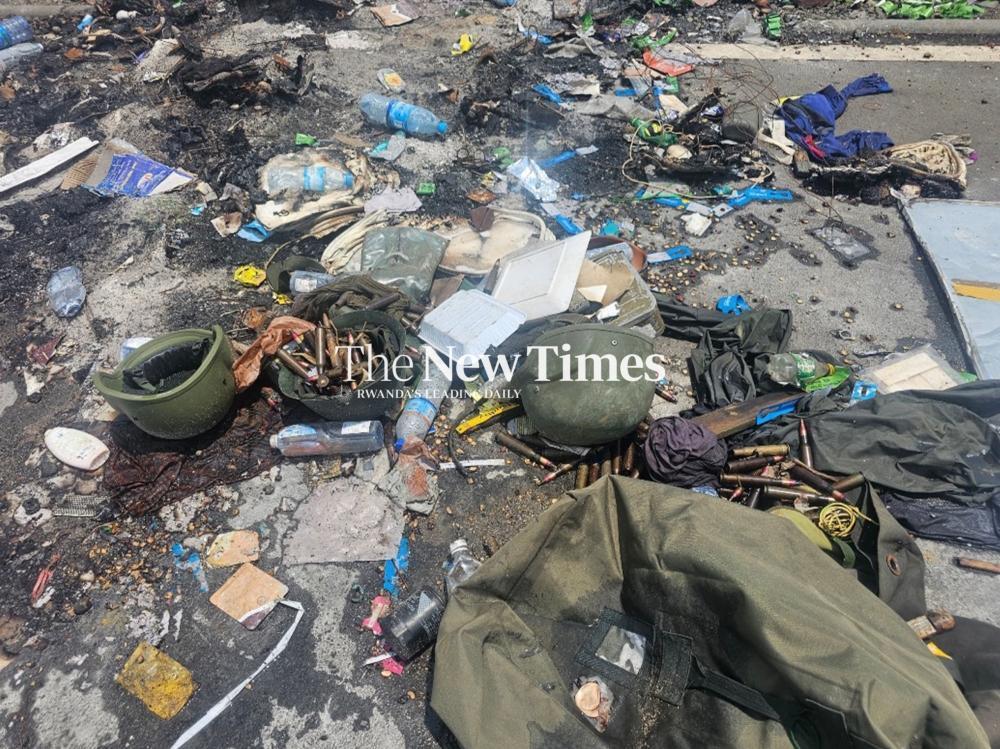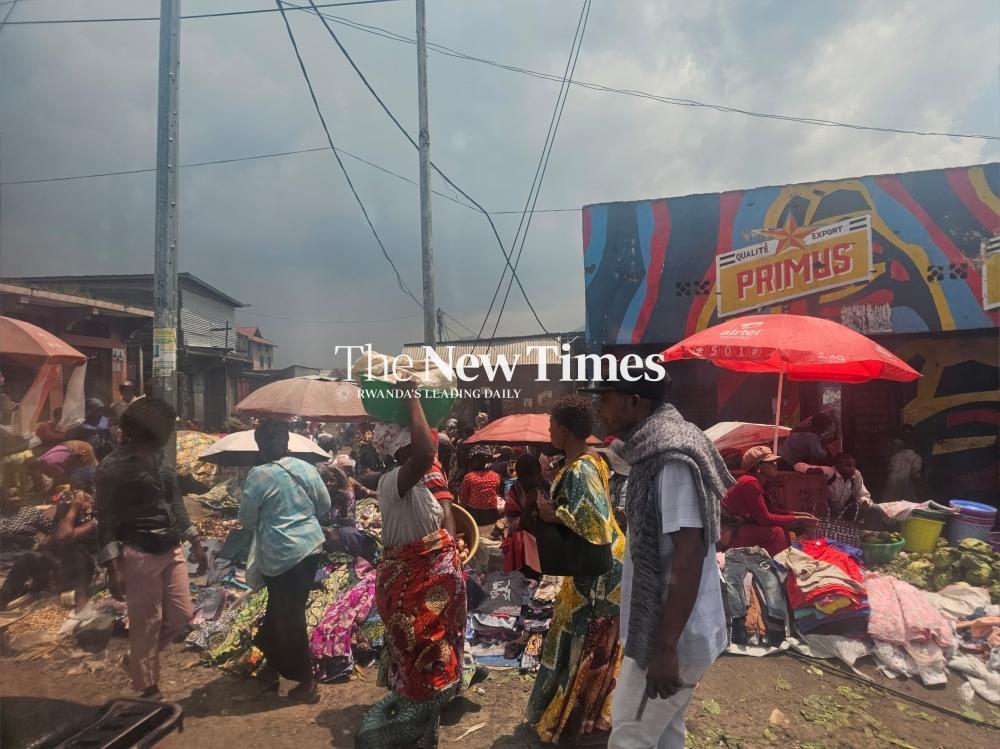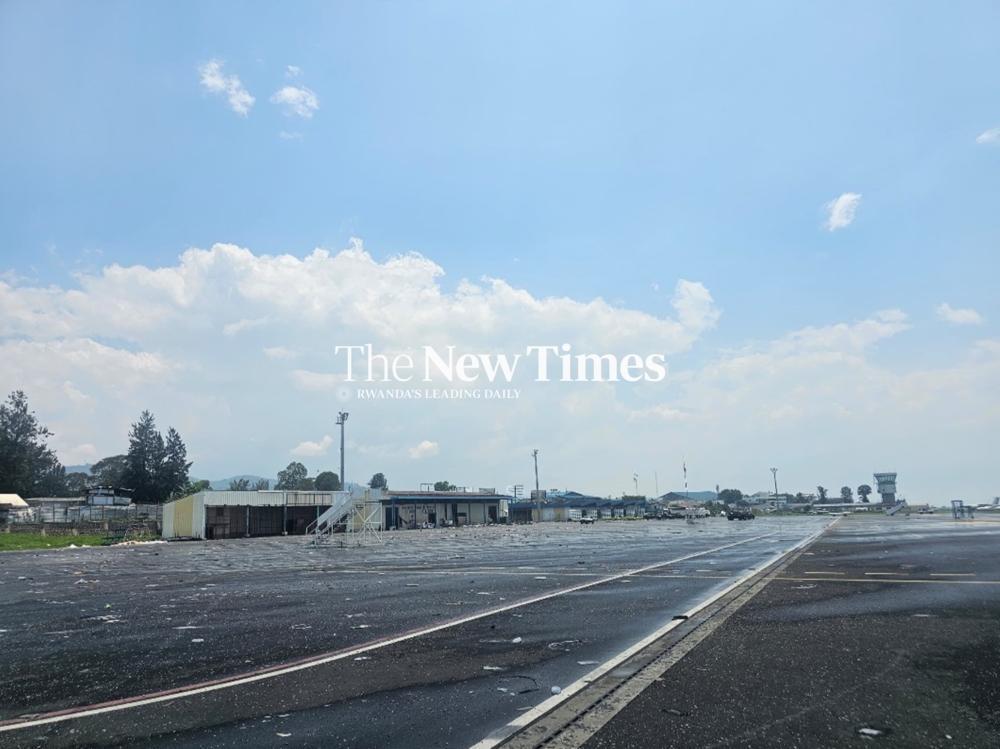Africa-Press – Rwanda. The long-awaited call came at 9:13a.m.
“Finally,” says the person on the other side of the phone call.
I take a deep sigh of relief. It’s Monday, February 10. I am in my hotel room at the foot of Mount Rubavu, a dominating feature over the city of Rubavu. The call arrives just as I am wondering whether I should check out and head back home to the capital Kigali, literally empty-handed and crestfallen.
I had arrived in the lakeside city of Rubavu three days earlier, on February 7, hoping to get the opportunity to cross into DR Congo’s city of Goma for a story or two on what life there looked like under the March 23 Movement, or simply M23.
Ten days earlier, M23 had seized the strategic Congolese city of about 2 million people after nearly two days of intense fighting for the control of Goma airport.
There had been a lot of stories and narratives around the situation in Goma, especially from the Western media circles and humanitarian industry, including that the humanitarian situation had worsened ever since M23 took Goma.
So, I wanted to find out exactly what was going on.
Indeed, on arrival in Rubavu, I called a friend who I knew was in town on a related mission.
He tells me he’ll travel across the border the next day. His contact, a Congolese national who hails from Rutshuru, works with an international organisation in Goma although he moved his family to Rwanda over security concerns.
A freshly retrieved body of a Congolese soldier before it was taken for burial at a public cemetery just outside the airport.
So, the next morning we crossed the Grande Barriere and had our passports seamlessly stamped on either side of the border. Over there, there was calm and everything seemed normal, at least on the streets.
An hour or so later, we decide to sit down at a local coffee shop. Then, during our conversation, my new friend and now guide says something that sparks my curiosity. He narrates an encounter with a former classmate of his a few months earlier who had become a Wazalendo militia leader (a self-proclaimed Major). His old schoolmate inquired if his family still lived in Rwanda and proceeded to advise him to move them from there because “we will soon be on the other side and things will be very bad there.”
Was an attack on Rwanda imminent?
“He was clear and looked genuinely concerned for my family, so I promised him I’d heed his advice.
“An attack on Rwanda was imminent,” our guide adds, with a sense of certainty. “It was not a secret, everyone knew about it…and I’m not talking about what President (Felix) Tshisekedi has been saying publicly, but rather things I had been seeing on the ground, the kind of weapons and troops the government poured into this city. It was a plan that had been communicated with clarity, through to the way to the rank and file of all FARDC and its allies.”
He says one of the strategies that had been discussed was for the Congolese army and its backers to trick M23 with a fake offensive in areas along the Rwandan border. They had envisioned that M23 would then carry out a counteroffensive, triggering a scenario in which they would be outnumbered and outgunned, he goes on.
“This was seen as an opportunity to overwhelm M23, pushing them across the border into Rwanda and then pursuing them there, with huge numbers of infantry fighters backed by a salvo of artillery firepower,” he insists, requesting not to be named for fear of any possible reprisals in the future.
The coalition forces, he says, “tried it at least once but it backfired, instead they lost ground.”
This claim of a potential conspiracy to attack Rwanda corroborates with Kigali’s previous assertions, including in the wake of M23’s seizure of Goma and the heavy artillery shelling of Rubavu by the FARDC coalition as the latter lost grip of the strategic city. Most of the shells were intercepted by missile defence technology of the Rwanda Defence Force.
Other sources cited information obtained from FARDC prisoners of war, reportedly including a Colonel, and other captured anti-Kigali elements, notably FDLR combatants.
In addition, in the days leading to my trip to Goma, footage and pictures emerged of heavy artillery and ammunition stockpiles that had been amassed in and around the city before it was fully captured by M23 on January 28.
But how big were these weapon stockpiles? What type of weapons were they? What’s their capabilities? What was the role of UN peacekeepers (MONUSCO) in the alleged conspiracy to attack Rwanda?
How about the Burundian troops as well as forces from SADC countries (South Africa, Tanzania and Malawi)? And European mercenaries (use of mercenaries is prohibited under international law)? Most importantly, the FDLR, the UN and US-sanctioned terror group founded by extremist figures linked to the 1994 Genocide against the Tutsi in Rwanda.
These were some of the unanswered questions that forced me to change my original story idea and instead set out to find out what exactly was going on both in the command and operational aspects of FARDC and its allies.
So, after the coffee table conversation on Saturday, I started calling everyone I knew who could help me access strategic military installations, armories and other key sites in and around Goma where FADRC and their allies planned and implemented their war strategies.
I wanted to find out how serious the plan was to invade Rwanda (which has been accused of supporting M23, claims it has dismissed).
I had hoped to reach Lt Col Willy Ngoma, the spokesperson of M23, in vain. But I kept calling and texting, back and forth for two days, until that Monday morning call came!
Someone at a senior level within M23 structures finally came through. And so, I couldn’t wait to get off the phone. The person who called asked me to find him on the other side of the border.
“My bosses were wondering how you were asking for permission to enter, yet you had been here on Saturday,” he told me, casually, upon linking up with him and exchanging pleasantries. “They found out?” I murmured back. “Yeah, we can tell…don’t you do the other side?” To which I reply, “Well, the last time I was just checking out the town.”
“Things are starting to take shape here; don’t you see that the immigration office is already operational?” he tells me as we drive past a long line of people, presumably looking for travel documents.
The brimming streets of Birere
We also notice that the mayoral office was up and running. A new mayor of the City of Goma had been named the previous week, and the new M23-appointed Governor of North Kivu Province, Bahati Musanga, had given all civil servants up to that Monday (February 10) to report back to office.
WATCH: Businesses in Birere, a beehive of commercial activity in eastern DR Congo’s city of Goma on Monday, February 10, a fortnight after the lakeside city was taken by the M23 rebel movement.
: @JMunyaneza / TNT pic.twitter.com/Sn34Bq0V7o
— The New Times (Rwanda) (@NewTimesRwanda) February 11, 2025
We are headed for the airport, he tells me.
A Red Cross pick-up transports bodies of FARDC soldiers killed in battle at the airport nearly two weeks after M23 took control of Goma. Photo by James Munyaneza.
Before long, we were suddenly in the middle of what looked like a huge, open market, teeming with countless people and business activity. “This is Birere,” he says, unprompted. “Life is back to normal, as you can see.”
Along the way, I see a few M23 fighters strolling the street, almost each one in a different military fatigue, with civilians going about their daily lives. A UN patrol car drives past.
“How do you work with them?” I ask curiously, pointing at the UN truck. “They have no choice; we are in charge now and they have to coordinate with us.”
Then, as the Birere crowds finally fade, we reach a public cemetery, a large section of which is dug-up fresh soil. “Underneath each stick (in the place of a headstone) you see, lies a fallen soldier, the government side lost a lot of fighters, Red Cross is still discovering bodies,” he tells me.
An Mi-26 attack helicopter (right) and another smaller helicopter were also seized from FARDC and its allies during the battle for Goma last month.
A few yards ahead, a Red Cross team is readying themselves to conduct a burial.
“Voila,” he tells me, albeit in a somewhat distressed tone. “So many soldiers died, it’s absurd Tshisekedi is sending our compatriots to die fighting a senseless war…just because he thinks we should be second-class citizens or deserve to die because we are demanding our rights. Right now, they are killing people in Bukavu (the capital of South Kivu Province, where M23 is advancing to).” Silence…
“There are lots of sandbags all over the place,” I break the ice. “We are at the airport already, those were defences of FARDC and their evil coalition,” he responds.
“Here we are,” he says, turning left.
The long wait outside the airport
We are at the entrance of Goma International Airport. As expected, there is a quarter guard manning the entrance. Their leader calmly approaches us, two of his colleagues following in tow. My newfound friend steps out of the car to speak with them. Moments after, he returns and proceeds to park the car on the side.
Fifteen minutes or so later, the team leader comes over again. They talk briefly; the M23 soldier uses his radio to communicate with someone else, presumably someone more senior. ‘My driver’ makes a few calls as well, apparently seeking clearance.
“I am with the journalist from Rwanda.” This goes on and on, for like 40 minutes. I’m struggling to show that I’m not impatient (although, deep down, I am starting to feel uneasy, fearing I could hit a snag).
The writer goes down the stairs of the Sukhoi fighter jet seized from the Congolese forces at Goma International Airport..
I bring up a lighter subject, if for nothing else to soothe my growing anxiety. How come there is there a bar right at the entrance of the airport? “The dysfunction of the government, maybe the owner is a big person in government or army,” he says, dialing a phone number again.
But, in all honesty, the rickety structure (now closed) is hardly out of place as the airport is surrounded by a hive of small-scale business activity on one side and a slum on the other, both in close proximity.
The smell of death
Amid the uncertainty, the green light (well, the second one) arrives – finally!
Then, just as we turned to enter, the smell of death suddenly engulfs us.
A white pick-up single cabin pulls up on its way out, a few meters from us. “Corpses again!” one of the armed guards says in a hushed voice, as his ‘Afande’ (the battle-hardened checkpoint commander who had kept us waiting until he received the go-ahead to let us in from a certain boss) suddenly experienced nausea so severe he could be seen struggling not to throw up.
The stony-faced masked driver of the pick-up waited as we drove into the airport, as the decomposed bodies leaked bodily fluids onto the cracked old asphalt of the airport. “That place needs to be disinfected,” another soldier says.
Weapons, including unexploded ordnance, and ammunitions, are still strewn across the airport nearly a fortnight later.
The bodies were about five, each wrapped in a body bag. Later, during our tour of the war-ravaged airport, we came across another body wrapped in a white bag waiting to be taken for burial. There are sections of the airport that are covered in bushes and grassy vegetation, and you got a sense there were still unretrieved bodies in there going by bad odours we kept encountering.
“I personally counted around 120 bodies immediately after we took the airport, but I understand Red Cross has so far recovered more than 300 others,” the commander of the M23 force that captured the airport tells me later.
“So many of them died, there must still be more bodies around.”
Debris from fighting across airport
The airport was the scene of one of the fiercest battles as the M23 marched onto Goma, with debris from fighting, such as unexploded ordnance and burnt military equipment, flak jackets and other military gear and clothing, shattered windows and collapsed ceilings still strewn across the place.
In contrast, there are hardly any visible wounds of war in nearby neighbourhoods, suggesting a deliberate strategy to limit civilian casualties as M23 moved into Goma.
During my two-hour, mostly guided tour of the airport, I saw a myriad of artillery and integral weapons, and ammunitions that were seized from the Congolese forces. They include modern equipment like tanks, BM-21 Grad 122mm multiple rocket launchers, howitzers, Katyusha multiple rocket launchers, mortars of different calibers, anti-aircraft weapons, RPGs, Machine Guns, missiles, RPGs, sniper rifles, APCs, SMGs, among others.
I also saw two combat aircraft and a transport aircraft that formerly belonged to FARDC.
In our next episode, we will delve into the specific types of the main weapons and ammunitions captured both at the airport and at a major lakeside armory (with dozens of containers of high-caliber ammunition), and what we saw at a joint command centre at Goma airport, from where the Congolese troops and all their allies, including MONUSCO, SADC and Burundian forces, coordinated their operations.
And, in subsequent series, we will bring you stories on SADC forces in M23-controlled areas, including at Goma airport and Mubambiro barracks in Masisi territory, their uneasy relationship with M23, and what their continued presence means. We will also look at the contiguous deployments of the pro-government coalition forces and militias, including the FDLR genocidaires and European mercenaries between Kibati and Kanyamahoro in Nyiragongo territory, strategically overlooking Rwanda.
We will also bring you the inside story of the battle for Mubambiro and surrounding areas in Masisi territory from the lenses of the M23 commanders at the base, and analyses on what we found out over the course of those two days.
Locals at Birere market in Goma on Monday, February 10.
For More News And Analysis About Rwanda Follow Africa-Press

